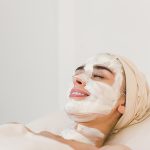1. Skipping Sun Protection
One of the biggest aftercare mistakes people make following cosmetic treatments—like chemical peels, laser therapy, or microneedling—is underestimating the importance of sun protection. Right after a procedure, your skin is more sensitive than usual and needs extra care to heal properly. Skipping sunscreen can lead to unwanted side effects that may compromise your results.
Why UV Exposure Is a Problem
When your skin is healing, its more prone to damage from the suns ultraviolet (UV) rays. UV exposure during this period can cause:
- Pigmentation issues: Dark spots or uneven skin tone may develop in treated areas.
- Delayed healing: The recovery process can slow down significantly.
- Increased sensitivity: Your skin might feel more irritated or inflamed when exposed to sunlight.
The Right Way to Protect Your Skin
To keep your results looking their best, use a broad-spectrum sunscreen every day—even on cloudy days or when youre indoors near windows. Look for sunscreens labeled “broad-spectrum,” which means they protect against both UVA and UVB rays.
Sunscreen Recommendations
| Type | Description | Best For |
|---|---|---|
| SPF 30+ Broad-Spectrum | Protects against UVA and UVB rays | Everyday outdoor use |
| Mineral Sunscreen (Zinc Oxide/Titanium Dioxide) | Gentle on sensitive or post-procedure skin | Immediately after treatment |
| Tinted Sunscreen | Adds light coverage and protects from visible light | Pigmentation-prone skin types |
Pro Tip:
Avoid direct sunlight during peak hours (10 AM to 4 PM) and wear a wide-brimmed hat or protective clothing if you need to be outside.
Your investment in cosmetic treatments deserves long-lasting results—don’t let something as simple as skipping sunscreen undo all that progress.
2. Touching or Picking at Treated Areas
It might be tempting to touch or pick at your skin after a cosmetic procedure, especially if it feels itchy, tight, or starts to peel. But this is one of the most common and harmful aftercare mistakes you can make. Even if your hands look clean, they carry bacteria that can easily transfer to treated areas.
Why You Should Avoid Touching Your Skin
Touching or picking at your skin can introduce bacteria and lead to:
- Infections: Open pores or healing wounds are more vulnerable to bacteria, which can cause redness, swelling, and pus-filled breakouts.
- Scarring: Picking at scabs or peeling skin disrupts the natural healing process and increases the risk of permanent scars.
- Delayed Healing: Constantly touching the area interrupts cell regeneration, slowing down recovery time.
Common Scenarios Where People Touch Without Realizing
| Scenario | Potential Risk |
|---|---|
| Checking your skin in the mirror | Unconscious touching spreads bacteria and irritates sensitive areas |
| Peeling off flaking skin | Can lead to scarring and uneven texture |
| Scratching due to itchiness | Might open up healing skin and invite infection |
What You Can Do Instead
- Keep your hands clean: Always wash your hands before applying any skincare products.
- Use clean tools or cotton swabs: If you need to apply ointment or touch an area, avoid direct hand contact.
- Apply soothing products recommended by your provider: This helps reduce itching and discomfort without needing to scratch.
- Distract yourself if you feel tempted to pick: Keep busy with other tasks or wear gloves if necessary during sleep.
Your skin needs time and care to fully heal. Letting it do its job without interference is one of the easiest ways to protect your investment and ensure optimal results from your treatment.
![]()
3. Not Following Aftercare Instructions
Every cosmetic procedure comes with its own set of aftercare instructions, and they’re not just suggestions — they’re essential for getting the best results. Ignoring or forgetting these guidelines can lead to less-than-ideal outcomes, longer healing times, or even complications that require additional treatments.
Why Aftercare Matters
Aftercare helps your body heal properly and ensures the treatment delivers what it promised. Whether it’s Botox, fillers, laser treatments, or a chemical peel, your skin and tissues need time and support to recover and adjust. Skipping steps or doing things too soon — like working out, using makeup, or going out in the sun — can undo all the good work done during your session.
Common Aftercare Mistakes
| Mistake | Why Its a Problem |
|---|---|
| Skipping prescribed ointments or creams | Increases risk of infection or slows down healing |
| Not avoiding sun exposure | Can cause pigmentation issues or irritation |
| Wearing makeup too soon | May clog pores or introduce bacteria to sensitive areas |
| Exercising right after treatment | Raises body temperature and can interfere with results |
| Lying flat after injectables (like Botox) | Might cause product migration and uneven results |
Stick to the Plan Your Provider Gives You
Your provider gives you personalized instructions based on your skin type, treatment area, and procedure type. If you’re unsure about anything — even something as simple as when to wash your face — ask! It’s always better to clarify than to guess. Good aftercare is just as important as the treatment itself when it comes to seeing great results.
4. Resuming Strenuous Activities Too Soon
Jumping back into your regular workout routine or engaging in heavy physical activity too soon after a cosmetic procedure is one of the most common aftercare mistakes—and it can seriously affect your results. While you might feel ready to get moving, your body is still healing beneath the surface.
Why Its a Problem
Exercising or doing any intense physical activity too early can lead to:
- Increased swelling – Movement and elevated heart rate can cause blood to rush to the treated area, making swelling worse.
- More bruising – Physical strain can put pressure on delicate blood vessels, causing them to break more easily.
- Delayed healing – Your body needs time and energy to repair itself. Overexertion diverts that energy away from recovery.
- Poor results – In some cases, premature activity can shift fillers, open incisions, or stretch healing skin, which could undo the work you just had done.
How Long Should You Wait?
The safe amount of rest time depends on the type of treatment you received. Here’s a general guideline:
| Treatment Type | Recommended Rest Period Before Exercise |
|---|---|
| BOTOX® / Dysport® | 24–48 hours |
| Dermal Fillers | 48–72 hours |
| Liposuction / Body Contouring | 2–4 weeks (light walking OK) |
| Surgical Facelift / Eyelid Surgery | 4–6 weeks (consult your surgeon) |
Your Best Move: Take It Slow
If youre unsure when its safe to exercise again, always follow your providers advice. A short break from your usual workouts is worth protecting your investment and getting the best possible results from your treatment. Remember—healing is just as important as the procedure itself!
5. Using Harsh Skincare Products
After any cosmetic procedure—whether its laser treatment, microneedling, or injectables—your skin needs time to heal. One of the most common mistakes people make during the aftercare phase is going back to their regular skincare routine too soon, especially when it includes strong or active ingredients.
Why It’s a Problem
Products with strong exfoliants, retinoids, or other active ingredients can irritate your freshly treated skin. These ingredients are powerful and typically used to promote cell turnover or treat specific skin concerns, but right after a procedure, your skin is more sensitive than usual. Using these products too early can cause:
- Redness and inflammation
- Burning or stinging sensations
- Prolonged healing time
- Poor results from your treatment
Ingredients to Avoid During Recovery
| Ingredient | Why to Avoid |
|---|---|
| Retinoids (like Retinol or Tretinoin) | Can be too harsh on healing skin, causing peeling and irritation |
| AHA/BHA (Glycolic Acid, Salicylic Acid) | Might over-exfoliate and disrupt the natural healing process |
| Benzoyl Peroxide | Tends to dry out skin and increase sensitivity post-treatment |
| Vitamin C (in high concentrations) | Might sting and increase redness in sensitive skin |
What You Should Use Instead
Your focus during recovery should be hydration, soothing ingredients, and sun protection. Look for gentle products with:
- Aloe Vera
- Ceramides
- Hyaluronic Acid (low concentration)
- Cica (Centella Asiatica)
If you’re not sure whether a product is safe to use post-procedure, consult your provider before applying anything new. Giving your skin a break from actives allows it to recover properly—and helps you get the best results from your treatment.


